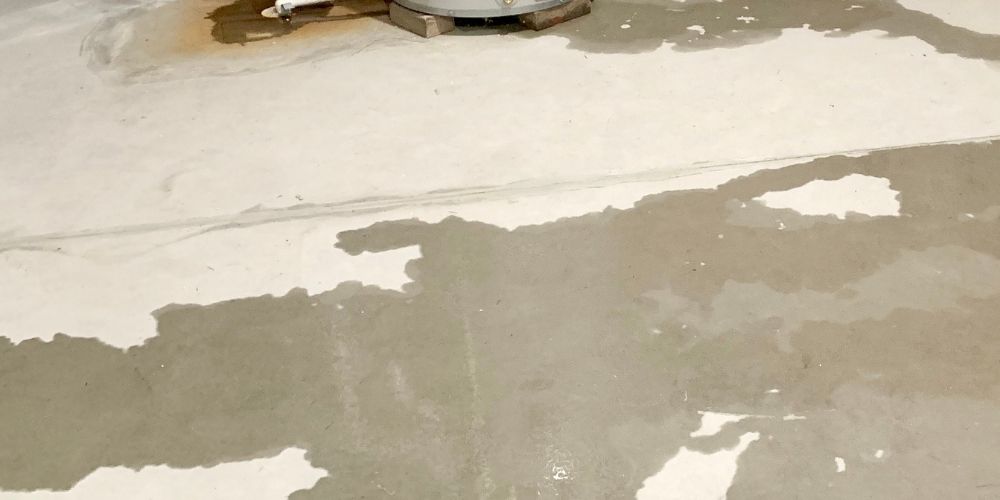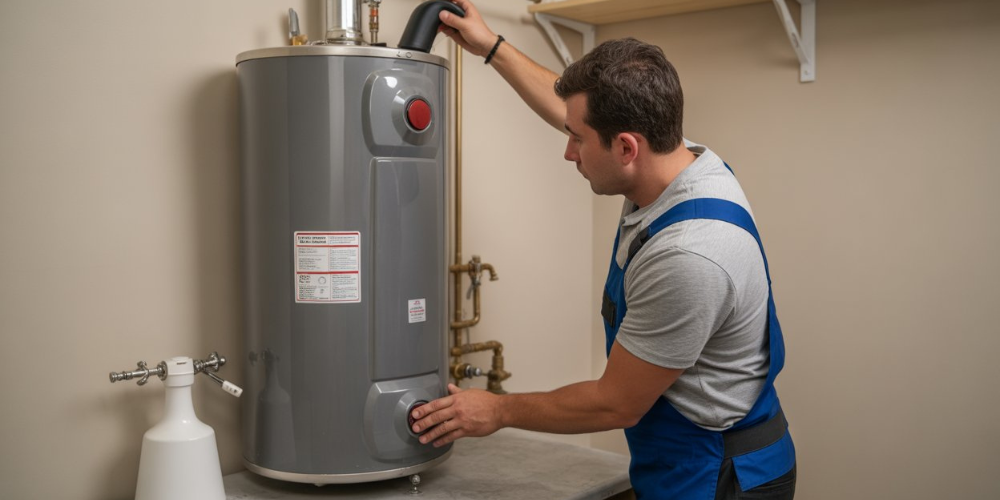When your toilet starts overflowing, leaking, or needs repair, knowing where the shut-off valve is located can save you from major water damage and costly repairs. Whether you’re dealing with an emergency or planning a simple upgrade, this small but vital component is your first line of defense. In this blog, we’ll walk you through everything you need to know — from locating your toilet shut-off valve, understanding its types, and how to use it, to what to do if it’s stuck or missing.
Shut-off Valve Location
If your toilet was made in the U.S., the shut-off valve is usually located on the back left side near the bottom of the toilet.
You’ll see a pipe coming out of the wall or floor, connected to a small valve. From the valve, there’s often a gray braided hose that goes up into the toilet tank. The valve will have a knob or handle you can turn; it might be round or look like a short lever.
What Is a Toilet Shut-off Valve?
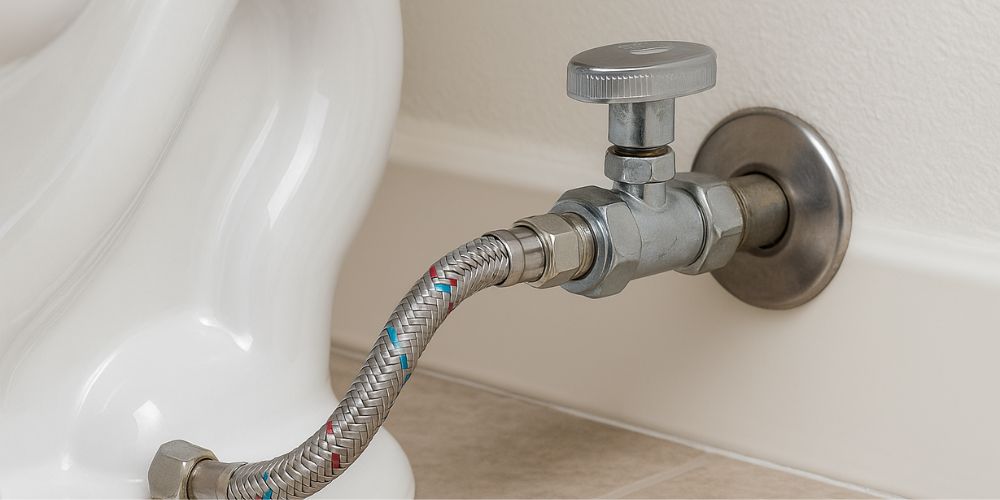
A toilet shut-off valve, also known as an angle stop or water supply valve, is a small plumbing device that controls the flow of water to your toilet tank. It allows you to turn off the water supply to just one toilet without affecting the rest of the house. This is especially helpful during repairs, maintenance, or emergencies.
Where to Find Your Toilet Shut-off Valve?
In most homes, the toilet shut-off valve is:
- Located on the wall directly behind or to the left of the toilet
- Attached to a flexible hose or metal pipe that connects to the toilet tank
- Positioned just a few inches above the floor
However, depending on your home type or bathroom layout, the valve may be hidden or harder to reach.
If You Live in an Older Home:
- The valve might be installed behind cabinetry, inside the wall, or hidden under the floor.
In Apartments or Multi-Unit Buildings:
- The shut-off valve may be located in a utility closet, basement, or hallway access panel.
- Some units share a main shut-off, which may require building maintenance to assist.
Read: Common Sewer Line Problems and Their Solution
How to Turn Off the Toilet Shut-off Valve?
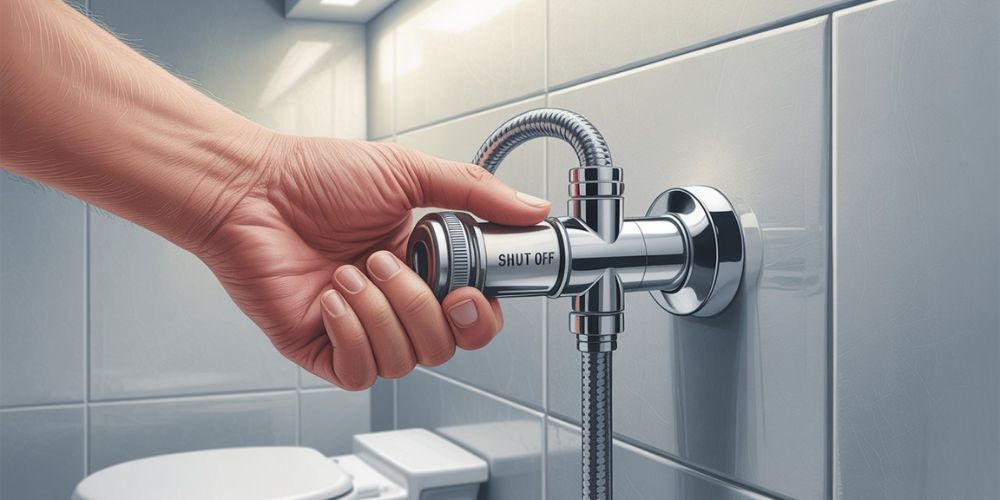
If you’re facing a leak or overflow, here’s how to stop the water:
- Locate the shut-off valve on the wall near the toilet base.
- Turn it clockwise (to the right) until it stops.
- If it’s hard to turn, apply gentle pressure — don’t force it.
- Flush the toilet to empty the tank and confirm water is off.
Tip: If the valve hasn’t been used in years, it may feel stuck. A drop of WD-40 and a wrench can help, but don’t overtighten.
Also read, Common Causes for Clogged Toilets and Their Solutions
What If You Can’t Find or Turn the Valve?
No Visible Valve?
If you don’t see a visible shut-off valve near your toilet, don’t panic. In some homes, especially older ones, the valve might be hidden behind a cabinet, wall panel, or even under the floor. In rare cases, particularly in very old properties, there might not be a shut-off valve installed at all.
Valve Is Stuck or Broken?
If the valve is present but stuck or difficult to turn, try using an adjustable wrench to apply gentle pressure — but avoid forcing it, as that could damage the pipe. If it still won’t budge, your safest option is to turn off your home’s main water supply and call a licensed plumber. They can safely inspect the valve, replace it if needed, or install a new one if it’s missing altogether.
Types of Toilet Shut-off Valves
When it comes to toilet shut-off valves, not all are created equal, and knowing which type you have can make future repairs or replacements much easier.
- Angle Stop Valve
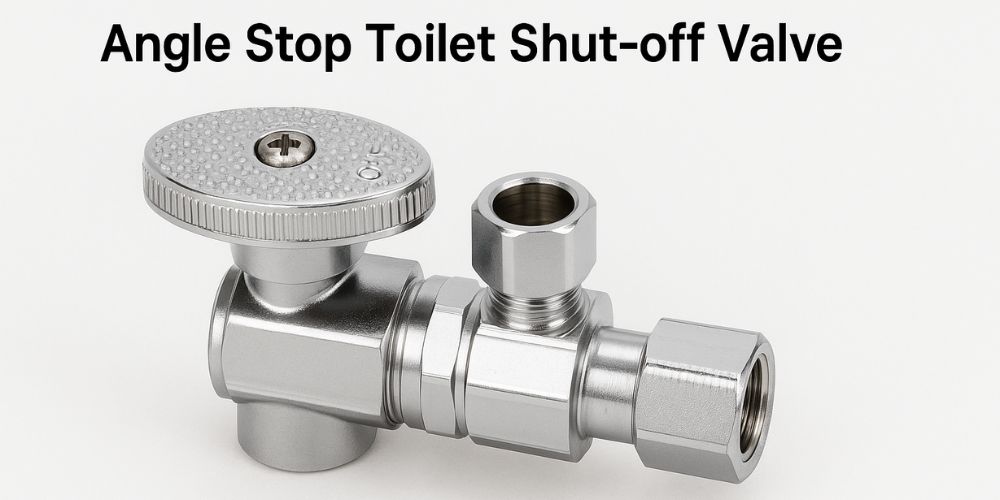
This is the most common type you’ll see in homes. It’s mounted at a 90-degree angle and connects from the wall to the toilet’s water supply line. Simple, compact, and reliable.
- Straight Stop Valve
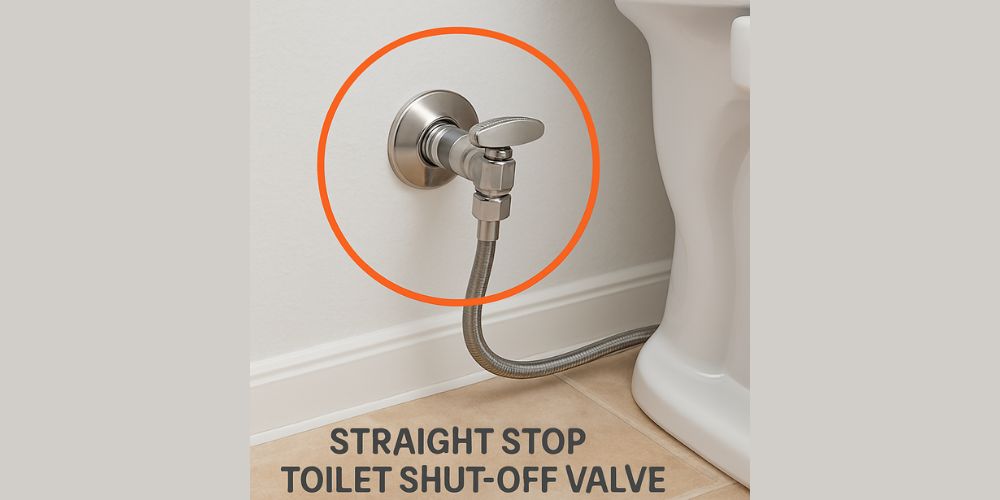
Unlike the angle stop, this one connects straight up from the floor. It’s often found in older bathrooms or when the water line comes from below rather than the wall.
- Push-Fit Valve (SharkBite)
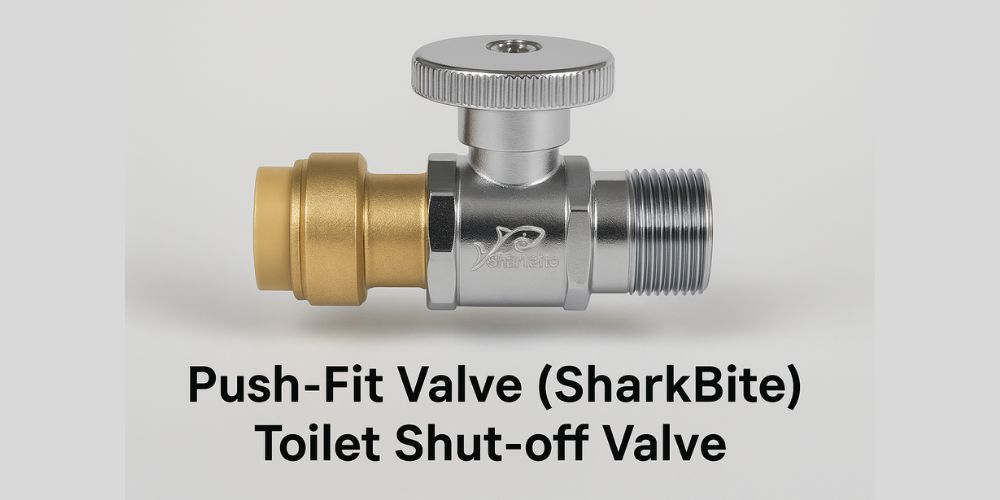
A modern favorite, the push-fit or SharkBite valve doesn’t require any tools. It simply snaps onto the pipe and locks into place — great for quick, DIY-friendly installations.
- Compression Valve
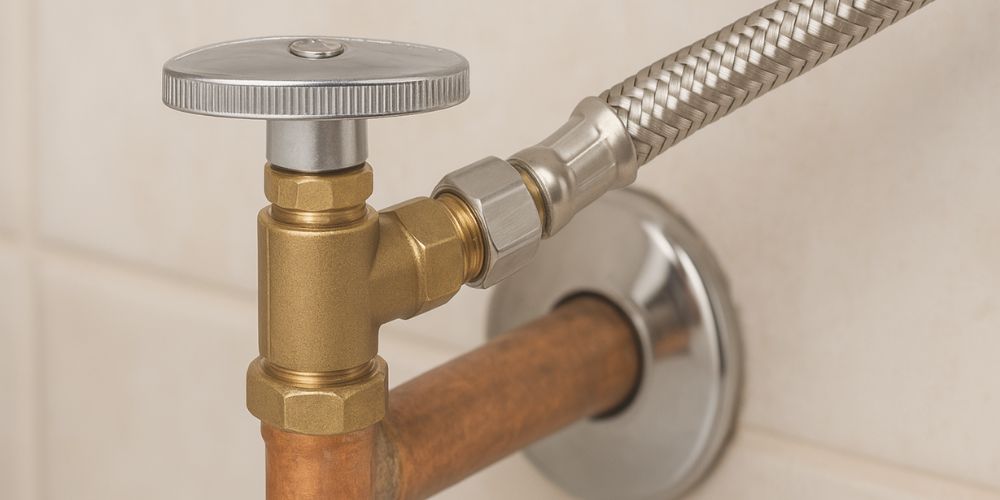
This type uses a compression fitting with a nut to tighten the connection. It’s durable and often used in remodels or when replacing old shut-off valves.
Understanding which valve type you have helps you choose the right replacement, avoid leaks, and make sure your toilet’s plumbing is in good shape.
When Should You Replace a Toilet Shut-off Valve?
Ever tried turning off your toilet water during a leak, only to realize the valve is stuck or worse — it doesn’t work at all? That tiny valve may not get much attention, but when it fails, it can lead to big problems. Replacing an old or faulty shut-off valve is one of the smartest things you can do to prevent future plumbing headaches.
Here’s when it’s time to consider a replacement:
- It’s leaking or constantly dripping
- You notice rust, corrosion, or mineral buildup
- It’s very stiff or completely stuck when turning
- You’re remodeling or upgrading your bathroom
- The valve is over 15–20 years old
Don’t wait until there’s water on your floor. A worn-out shut-off valve can fail when you need it most — replacing it during a repair or remodel is a small step that offers big peace of mind.
Frequently Asked Questions (FAQs)
1. Where is the shut-off valve on a toilet?
It’s usually on the wall behind or beside the toilet, connected to the water supply line.
2. Can I shut off the water to just one toilet?
Yes, that’s exactly what the shut-off valve is for — it isolates water to that one fixture.
3. What if my toilet doesn’t have a shut-off valve?
You’ll need to turn off your home’s main water supply or have a plumber install one for safety and convenience.
4. Is it safe to leave the toilet shut-off valve closed?
Yes, but it’s best used temporarily. Leaving it off long-term could lead to dried seals or internal toilet damage.
5. How do I turn the valve if it’s stuck?
Use WD-40 and a wrench gently. If it still won’t budge, call a plumber to avoid pipe damage.
Final Thoughts
Your toilet shut-off valve might be small, but it plays a huge role in protecting your home from leaks and damage. Whether you’re fixing a toilet or preparing for a remodel, knowing how to locate and operate this valve is essential. If your valve is stuck, corroded, or missing, don’t wait for an emergency.
Need help locating or replacing your toilet shut-off valve? Contact PlumbSmart today for fast, reliable plumbing service!



